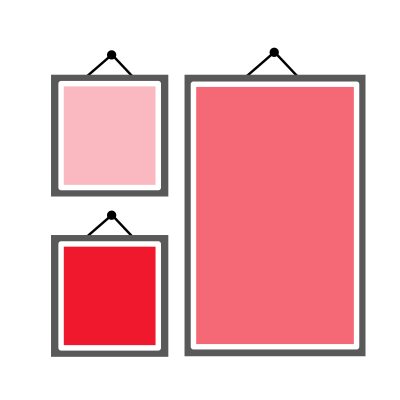 At the Gallery Walk, participants can explore different project stations to experience demonstrations, interactives, posters, videos, and/or artifacts from project work.
At the Gallery Walk, participants can explore different project stations to experience demonstrations, interactives, posters, videos, and/or artifacts from project work.
The gallery walk will take place in the evening of the first conference day, during the reception, from 5:30pm to 7pm. (Presenters will set up their stations between 4:45pm and 5:30pm on that same day.)
Who will present?
The program committee picked a set of presenters based on the information conference participants specified in their applications.
I’m presenting, where’s my station?
Gallery Walk stations are set up in Ballroom C+D+E and in the Pre-Function Area. Each station consists of a table. Each table is labeled with the presentation info. Stations will be set up starting at 4:45 pm. To find your station quickly, go to the registration desk at 4:45 pm and ask for the precise location, or just walk through the rooms and look for the table labeled with your info.
I requested a poster board, how big will it be?
If you specified that you would like to present a poster, your station (i.e., your table) will come with a table-top poster board of size 48 inches wide by 36 inches tall.
I requested a power outlet, will it be there?
For those stations for which power was requested, we will provide an outlet at the table.
I’m going to present, how should I prepare?
We asked presenters to fill in a form where they provided a title and a short description of what they will present at their Gallery Walk station (and optionally a picture that we will include in the program). In that form they also had to specify whether they need space at a table (e.g., to put up a laptop or some equipment), an opportunity to put up a poster, and a power outlet so they can plug in their laptop or equipment.
While some stations might simply show a poster (and might thus not even need a table), others might include a demo with interactives, some might show a video or software demo on a laptop, and yet others might involve all of those features. In general, the more interactive, the better.
During the Gallery Walk, expect conference participants to walk up to your station, carrying along some food and drinks, and expect some noise from nearby stations.
NOTE: No projection equipment, screens, or video displays will be available during the Gallery Walk. If you require such equipment, you are responsible for bringing and storing your own equipment.
Gallery Walk Stations
The Gallery Walk consists of the following 27 project-related stations (plus 4 posters with results from the working sessions):
Using Analytics to Examine Programming Process Over Product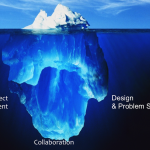
Shuchi Grover.
In this Cyberlearning EXP, SRI and CMU, in partnership with researchers at Stanford and UC, Santa, Cruz are using learning analytics and evidence-centered design to study programming process as ...
Read moreVisual Classrooms: Tools for Collaborative Learning and Knowledge-Building
Leslie Schneider.
Visual Classrooms is a research validated collaboration platform designed to improve student engagement and support interactive learning and adaptive instruction. Our interactive digital whiteboard encourages students to quickly ...
Read moreIdea Thread Mapper (ITM): A timeline-based collective knowledge mapping tool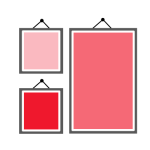
Jianwei Zhang.
Beyond micro-level representations of ideas in online discourse as postings and build-ons, ITM uses an idea thread to represent a line of inquiry and clusters of idea threads to ...
Read moreMeasuring student’s self-report of emotion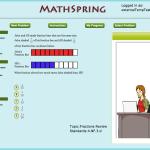
Ivon Arroyo.
We quantified a measure of emotion in student self-reports; e.g., what students describe as “frustration” may differ between individuals in terms of valence and activation. We asked students to ...
Read moreMacroworlds and an infrastructure for making them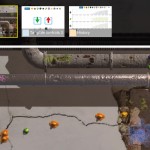
Tom Moher.
Macroworlds are simulations experienced through interaction with an ecology of personal and shared digital devices distributed throughout the physical space of classrooms. Nutella is a software development and run-time ...
Read moreDigital East St. Louis: Bridging STEM and Humanities to Promote IT Careers
Liza Cummings and Sharon Locke.
Middle school students are building a comprehensive database and a content-rich digital map showcasing their research into the history and culture of the city of East ...
Read moreCollaborative Sketch Tools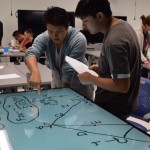
Emma Mercier.
The CSTEPS project focuses on collaborative sketch tools. In this demo, our latest software that allows for synced sketching across devices will be shown.
Project:
Fostering Collaborative Drawing and Problem ...
Read morePersketchtivity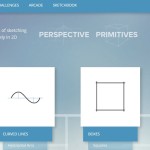
Ethan Hilton.
Persketchtivity is a natural sketch-based AI tool to help engineering students master free-hand sketching. Visual communication and visual thinking strongly supports engineering design and innovation.
Project:
5. EXP: Collaborative Research: PerSketchTivity- ...
Read moreSupporting self-directed learning and identity development in online communities
Caitlin Martin and Denise Nacu.
We share the Digital Youth Divas platform, designed to engage middle school girls, especially those from underserved communities, with computational projects. We highlight features to support ...
Read moreCyber-Eye: Empowering Learning through Unmanned Aerial Vehicles
Ivan Mutis.
The Cyber-Eye approach seeks to revolutionize CEM learning and amplify students’ understanding of the dynamic complexity of the CEM physical and social contexts through aerial visualizations using Unmanned Aerial ...
Read moreEMBRACE: Enhanced Moved by Reading to Accelerate Comprehension in English
Erin Walker.
This poster and demo will showcase the EMBRACE iPad app, an intelligent tutoring system for reading comprehension. The application works by scaffolding young English Language Learners as they create ...
Read moreAdapting to Affect in Multimodal Dialogue-Rich Interaction with Middle School Students
James Lester.
The major goals of the project are to design, develop, and refine an integrated affect and dialogue management model that adaptively responds to students’ affective states in the course ...
Read moreConstructionism in Learning: Sustainable Lifecycle Engineering (CooL:SLiCE)
Carolyn E. Psenka.
Wayne State, Penn State and Oregon State universities are collaborating to develop the CooL:SLiCE cyberlearning platform for enabling research in support of sustainable lifecycle engineering education. The CooL:SLiCE ...
Read moreAnalyzing Collaboration Quality of Small Group Interactions Using Speech Data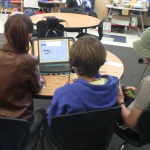
Cynthia D’Angelo.
This demo shows our three-person collaboration activity station and we will present the preliminary results of group level collaboration quality coding as a first step in automating targeted feedback ...
Read moreThe Invention Coach: An Intelligent Exploratory Learning Environment
Jenna Marks.
We describe the design of the Invention Coach, which is based on a two-pronged approach. Our design was informed by our own study of naturalistic teacher guidance for ...
Read moreThe Frame: Providing Augmented Virtual Learning Experiences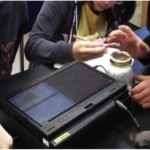
Jennie Chiu and Charles Xie.
This demo introduces the Frame, a novel mixed-reality technology that uses everyday objects to control a molecular simulation. Students feel as if they are directly experimenting ...
Read moreScalable, web-delivered supports to help students “Learn to Learn”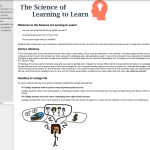
Matthew Bernacki.
Many students enter STEM majors with insufficient learning skills for the challenging coursework they encounter. This project examines how web-delivered training on principles of learning can help students adjust ...
Read moreMicrogenetic Learning Analytics: Towards a New Method of Discourse Analysis
Florence Sullivan.
The MLA method is rooted in Bakhtin’s notion of speech genres; it combines empirically derived qualitative models of situated action with statistical natural language processing techniques to aid in ...
Read moreDigital Tools for Representation-Based Proof
Andee Rubin.
The Technology for Mathematical Argumentation project has explored digital tools with which elementary students can construct animated representation-based proofs of generalizations about arithmetic operations.
Project:
Technology for Mathematical Argumentation
This is ...
Read moreAutomated feedback in an open-ended experimental process lab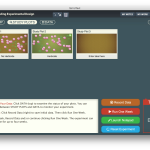
Eli Meir.
I’ll show a demo of Save the Simploids: Understanding Experimental Design, a new lab from SimBio that provides students with guidance and then an open-ended playground in which to ...
Read moreLearning to See, Seeing to Learn
Marti Louw.
Macroinvertebrates.org addresses the taxonomic ID bottleneck in citizen science with a new kind of online teaching collection that aims to scaffold observational skill development, increase engagement and accuracy in ...
Read moreEarthquake Rebuild: Mathematical Thinking and Learning via Architectural Design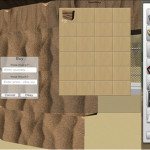
Fengfeng Ke.
This poster will demonstrate Earthquake Rebuild, a 3D epistemic simulation game that aims to promote active math learning for middle-school students.
Project:
Earthquake Rebuild: Mathematical Thinking and Learning via Architectural Design ...
Read moreGulliver Innovative Learning: a Platform for Managing Kinesthetic Activities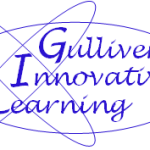
Nirit Glazer.
The goal of PlayFlu by Gulliver Innovative Learning is to EDUCATE kids and parents about the BENEFITS of vaccinations in order to INCREASE vaccination rates in our community.
Project:
Gulliver ...
Read moreTaking Games to School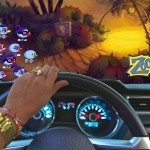
Teon Edwards.
We’re building and researching prototype data visualizations, online community tools, and other resources to help teachers bridge between students’ free-choice game play of Zoombinis and the classroom. Check out ...
Read moreMaking In-Class Problem Solving Interactive and Real-time Using Mobile Devices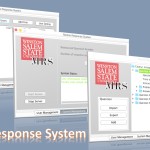
Mohammad Fuad.
Mobile Response System (MRS) provides faculty with the opportunity of evidence-based teaching by allowing students with interactive exercises with different learning outcomes and by getting an instant feedback on ...
Read moreData Science Games—Rapid Iteration through Game, Data, Model => STEM Learning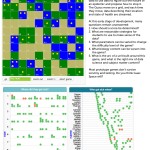
William Finzer.
The defining characteristics of a data science game are: a game is embedded in a data analysis environment; data from the game flow seamlessly into the surrounding environment; and ...
Read moreMeasuring STEM Learning in Games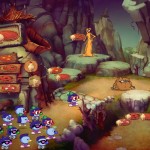
Jodi Asbell-Clarke.
We will discuss the methods we use to measure implicit understandings of physics and computational thinking in games. We will show examples of the games and describe the learning ...
Read moreBesides the above project-related stations, the Gallery Walk also will host four stations with posters from the four working session themes, presented by the leaders of the corresponding working sessions.
 At the Gallery Walk, participants can explore different project stations to experience demonstrations, interactives, posters, videos, and/or artifacts from project work.
At the Gallery Walk, participants can explore different project stations to experience demonstrations, interactives, posters, videos, and/or artifacts from project work.


























